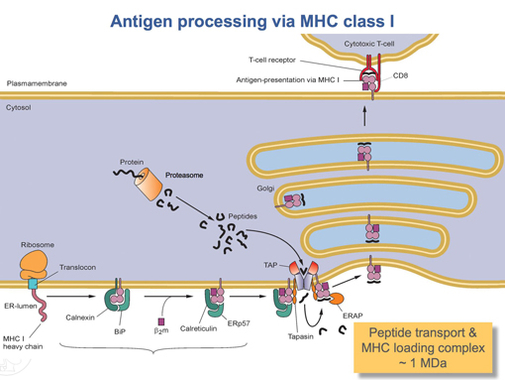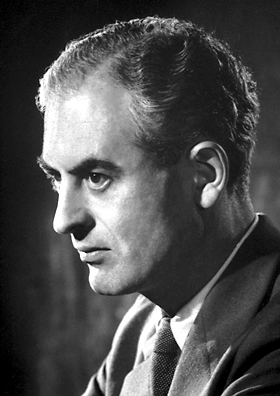|
HLA-A24
HLA-A24 (A24) is a human leukocyte antigen ''serotype'' within HLA-A serotype group. The serotype is determined by the antibody recognition of α24 subset of HLA-A α-chains. For A24, the alpha, "A", chain are encoded by the HLA-A allele group and the β-chain are encoded by B2M locus. This group currently is dominated by A*2402. A24 and A are almost synonymous in meaning. A24 is a split antigen of the broad antigen HLA-A9 and it is a sister serotype of HLA-A23. A*2402 has one of the highest "A" frequencies identified for a number of peoples, including Papua New Guineans, Indigenous Taiwanese (Eastern Tribals), Yupik and Greenland leuts It is common over much of Southeastern Asia. In Eurasia it is least common in Ireland, and A24 is relatively uncommon in Africa except North Africa and Kenya. Serotype There are over 90 known A*24 alleles, 69 code for different isoforms and 7 are nulls. A*2403 can also be detected as A2403 serotype. Associated disease A24 has a secondary ris ... [...More Info...] [...Related Items...] OR: [Wikipedia] [Google] [Baidu] |
HLA-A9
HLA-A9 (A9) is a broad antigen HLA- A serotype that recognized the HLA-A23 and HLA-A24 HLA-A24 (A24) is a human leukocyte antigen ''serotype'' within HLA-A serotype group. The serotype is determined by the antibody recognition of α24 subset of HLA-A α-chains. For A24, the alpha, "A", chain are encoded by the HLA-A allele group an ... serotypes. A*2402 appears to have evolved from A*23 alleles by a process of gene conversion. The A23 is more common in Africa and regions proximal to Africa. A24 is at very high frequencies in Austronesia and certain indigenous peoples of the Arctic, North America, South America and West Pacific Rim. While it is common over most of Eurasia, it is found at low abundance in NW Europe. A24 appears to have been carried by the first colonizers of South Eastern Asia. References {{DEFAULTSORT:Hla-A9 9 ... [...More Info...] [...Related Items...] OR: [Wikipedia] [Google] [Baidu] |
HLA-A
HLA-A is a group of human leukocyte antigens (HLA) that are encoded by the HLA-A locus, which is located at human chromosome 6p21.3. HLA is a major histocompatibility complex (MHC) antigen specific to humans. HLA-A is one of three major types of human MHC class I transmembrane proteins. The others are HLA-B and HLA-C. The protein is a heterodimer, and is composed of a heavy α chain and smaller β chain. The α chain is encoded by a variant HLA-A gene, and the β chain (β2-microglobulin) is an invariant β2 microglobulin molecule. The β2 microglobulin protein is encoded by the B2M gene, which is located at chromosome 15q21.1 in humans. MHC Class I molecules such as HLA-A are part of a process that presents short polypeptides to the immune system. These polypeptides are typically 7-11 amino acids in length and originate from proteins being expressed by the cell. There are two classes of polypeptide that can be presented by an HLA protein: those that are supposed to be expressed ... [...More Info...] [...Related Items...] OR: [Wikipedia] [Google] [Baidu] |
HLA-A23
HLA-A23 (A23) is a human leukocyte antigen ''serotype'' within HLA-A serotype group. The serotype is determined by the antibody recognition of α23 subset of HLA-A α-chains. For A23, the alpha, "A", chain are encoded by the HLA-A allele group and the β-chain are encoded by B2M locus. This group currently is dominated by A*2301. A23 and A are almost synonymous in meaning. A23 is a split antigen of the broad antigen HLA-A9 and it is a sister serotype of HLA-A24. A23 is common in Africa and regions of the Middle East, Mediterranean, and India than Europe, East Asia or the Americas. Serotype Allele Haplotypes A23-B7 is found in N.Afr. and S.Afr non-caucasians. A23-B44 is found in Albania, Zimbabwe, Morocco, Spain and Danes. A23-B58 is found in the !kung and Zaire. Associated diseases A*23:Cw*07 is associated with higher viral load in HIV The human immunodeficiency viruses (HIV) are two species of ''Lentivirus'' (a subgroup of retrovirus) that infect humans. Over ... [...More Info...] [...Related Items...] OR: [Wikipedia] [Google] [Baidu] |
History And Naming Of Human Leukocyte Antigens
Human leukocyte antigens (HLA) began as a list of antigens identified as a result of transplant rejection. The antigens were initially identified by categorizing and performing massive statistical analyses on interactions between blood types.Davis, Daniel M. The Compatibility Gene. How Our Bodies Fight Disease, Attract Others, and Define Our Selves. Oxford: Oxford UP, 2014. Print. This process is based upon the principle of serotypes. HLA are not typical antigens, like those found on surface of infectious agents. HLAs are ''allo''antigens, they vary from individual to individual as a result of genetic differences. An organ called the thymus is responsible for ensuring that any T-cells that attack self proteins are not allowed to live. In essence, every individual's immune system is tuned to the specific set of HLA and self proteins produced by that individual; where this goes awry is when tissues are transferred to another person. Since individuals almost always have different "ba ... [...More Info...] [...Related Items...] OR: [Wikipedia] [Google] [Baidu] |
Thymoma
A thymoma is a tumor originating from the epithelial cells of the thymus that is considered a rare malignancy. Thymomas are frequently associated with neuromuscular disorders such as myasthenia gravis; thymoma is found in 20% of patients with myasthenia gravis. Once diagnosed, thymomas may be removed surgically. In the rare case of a malignant tumor, chemotherapy may be used. Signs and symptoms A third of all people with a thymoma have symptoms caused by compression of the surrounding organs by an expansive mass. These problems may take the form of superior vena cava syndrome, dysphagia (difficulty swallowing), cough, or chest pain. One-third of patients have their tumors discovered because they have an associated autoimmune disorder. As mentioned earlier, the most common of those conditions is myasthenia gravis (MG); 10–15% of patients with MG have a thymoma and, conversely, 30–45% of patients with thymomas have MG. Additional associated autoimmune conditions include thymom ... [...More Info...] [...Related Items...] OR: [Wikipedia] [Google] [Baidu] |
Systemic Lupus Erythematosus
Lupus, technically known as systemic lupus erythematosus (SLE), is an autoimmune disease in which the body's immune system mistakenly attacks healthy tissue in many parts of the body. Symptoms vary among people and may be mild to severe. Common symptoms include painful and swollen joints, fever, chest pain, hair loss, mouth ulcers, swollen lymph nodes, feeling tired, and a red rash which is most commonly on the face. Often there are periods of illness, called flares, and periods of remission during which there are few symptoms. The cause of SLE is not clear. It is thought to involve a mixture of genetics combined with environmental factors. Among identical twins, if one is affected there is a 24% chance the other one will also develop the disease. Female sex hormones, sunlight, smoking, vitamin D deficiency, and certain infections are also believed to increase a person's risk. The mechanism involves an immune response by autoantibodies against a person's own tissues. T ... [...More Info...] [...Related Items...] OR: [Wikipedia] [Google] [Baidu] |
Diabetes Mellitus Type 1
Type 1 diabetes (T1D), formerly known as juvenile diabetes, is an autoimmune disease that originates when cells that make insulin (beta cells) are destroyed by the immune system. Insulin is a hormone required for the cells to use blood sugar for energy and it helps regulate glucose levels in the bloodstream. Before treatment this results in high blood sugar levels in the body. The common symptoms of this elevated blood sugar are frequent urination, increased thirst, increased hunger, weight loss, and other serious complications. Additional symptoms may include blurry vision, tiredness, and slow wound healing. Symptoms typically develop over a short period of time, often a matter of weeks. The cause of type 1 diabetes is unknown, but it is believed to involve a combination of genetic and environmental factors. The underlying mechanism involves an autoimmune destruction of the insulin-producing beta cells in the pancreas. Diabetes is diagnosed by testing the level of sugar or ... [...More Info...] [...Related Items...] OR: [Wikipedia] [Google] [Baidu] |
Buerger's Disease
Thromboangiitis obliterans, also known as Buerger disease (English ; ) or Winiwarter-Buerger disease, is a recurring progressive inflammation and thrombosis (clotting) of small and medium arteries and veins of the hands and feet. It is strongly associated with use of tobacco products, primarily from smoking, but is also associated with smokeless tobacco. Signs and symptoms There is a recurrent acute and chronic inflammation and thrombosis of arteries and veins of the hands and feet. The main symptom is pain in the affected areas, at rest and while walking (claudication). The impaired circulation increases sensitivity to cold. Peripheral pulses are diminished or absent. There are color changes in the extremities. The colour may range from cyanotic blue to reddish blue. Skin becomes thin and shiny. Hair growth is reduced. Ulcerations and gangrene in the extremities are common complications, often resulting in the need for amputation of the involved extremity. Pathophysiology The ... [...More Info...] [...Related Items...] OR: [Wikipedia] [Google] [Baidu] |
Taiwanese Aborigines
Taiwanese may refer to: * Taiwanese language, another name for Taiwanese Hokkien * Something from or related to Taiwan ( Formosa) * Taiwanese aborigines, the indigenous people of Taiwan * Han Taiwanese, the Han people of Taiwan * Taiwanese people, residents of Taiwan or people of Taiwanese descent * Taiwanese language (other) * Taiwanese culture * Taiwanese cuisine * Taiwanese identity Taiwanese people may be generally considered the people of Taiwan who share a common culture, ancestry and speak Taiwanese Mandarin, Hokkien, Hakka or indigenous Taiwanese languages as a mother tongue. Taiwanese people may also refer to the i ... See also * {{disambiguation Language and nationality disambiguation pages ... [...More Info...] [...Related Items...] OR: [Wikipedia] [Google] [Baidu] |
Papua New Guinea
Papua New Guinea (abbreviated PNG; , ; tpi, Papua Niugini; ho, Papua Niu Gini), officially the Independent State of Papua New Guinea ( tpi, Independen Stet bilong Papua Niugini; ho, Independen Stet bilong Papua Niu Gini), is a country in Oceania that comprises the eastern half of the island of New Guinea and its offshore islands in Melanesia (a region of the southwestern Pacific Ocean north of Australia). Its capital, located along its southeastern coast, is Port Moresby. The country is the world's third largest island country, with an area of . At the national level, after being ruled by three external powers since 1884, including nearly 60 years of Australian administration starting during World War I, Papua New Guinea established its sovereignty in 1975. It became an independent Commonwealth realm in 1975 with Elizabeth II as its queen. It also became a member of the Commonwealth of Nations in its own right. There are 839 known languages of Papua New Guinea, one of ... [...More Info...] [...Related Items...] OR: [Wikipedia] [Google] [Baidu] |



